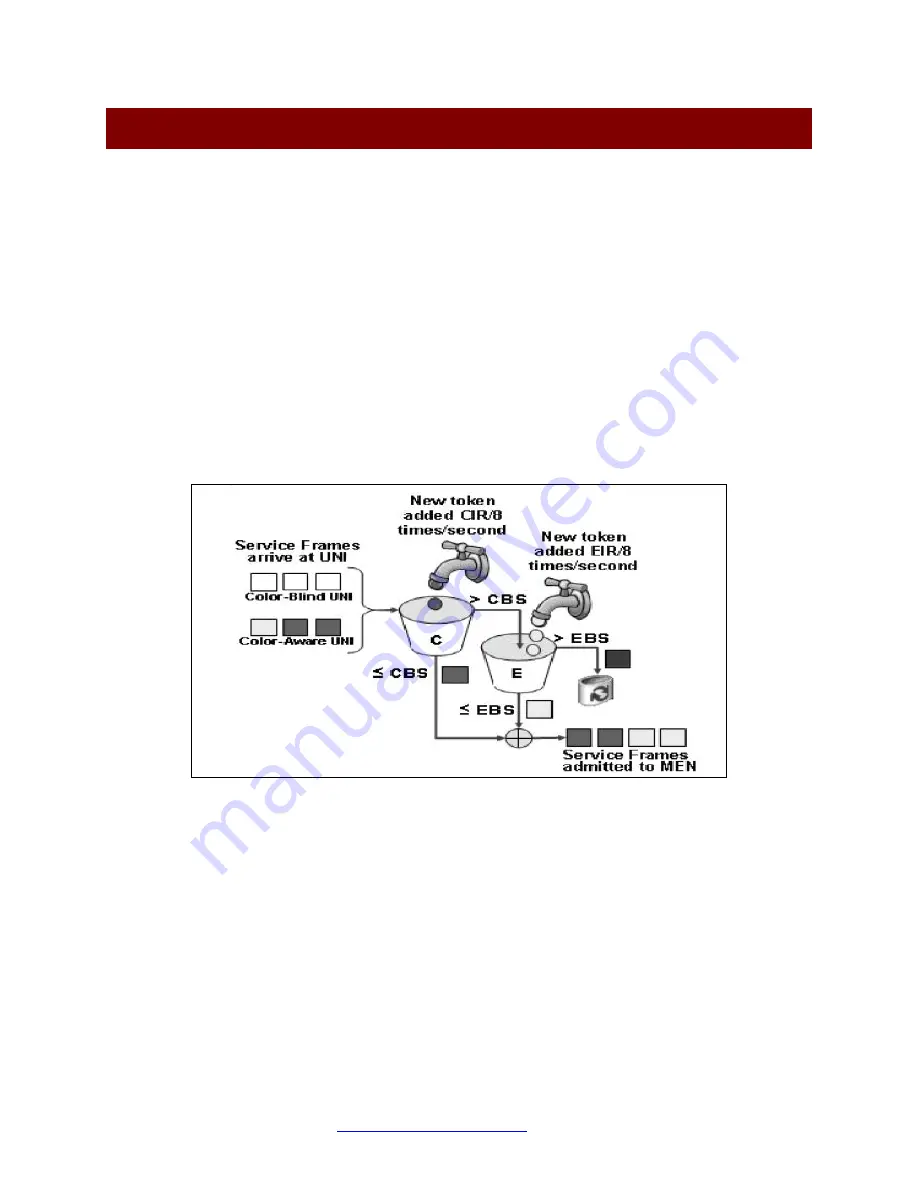
Transition Networks
S4224 Web User Guide
33558 Rev. C
Page 314 of 669
QoS Configuration
S4224 QoS Configuration is performed from the
Configuration
>
QOS
menu path. Quality of Service
(QoS) is a method to guarantee a bandwidth relationship between individual applications or protocols.
A communications network transports a multitude of applications and data, including high-quality video
and delay-sensitive data such as real-time voice. Networks must provide secure, predictable, measurable,
and sometimes guaranteed services. Achieving the required QoS becomes the secret to a successful
end-to-end business solution. QoS provides a set of techniques to manage network resources to achieve
this success.
Bandwidth Profiling
MEF 10.2 defines ‘a bandwidth profile’ as
“a method of characterizing Service Frames for the purpose of
rate enforcement or policing.”
A sample bandwidth profile use case for a provider dropping a port at an
enterprise customer for triple-play services (video, voice and data). The provider may have a Service level
agreement with a customer for 5M for video, 3M for voice and 4M for data service, but the overall service
cannot exceed 7M for that subscriber.
Figure 10. Color Aware
Token Bucket Profile
for Bandwidth Profiling
The S4224 device supports bandwidth profiling per MEF 10.2, section 7.11 at three levels:
1. Ingress bandwidth profile per UNI (port),
2. Ingress bandwidth profile per EVC (VLAN) per UNI, and
3. Ingress bandwidth profile per Cos per EVC per UNI
For options 2 and 3, the S4224 can provide an overall UNI bandwidth profile as well.
Configuration is performed from the
Ethernet Services
>
Bandwidth Policies
menu path. The types are
1. MEF (not a true leaky bucket), or 2. Single (no EIR support). These are supported by MEF 10.2. This is
technically not a leaky bucket but it is referred to as a token bucket profile in MEF10.2 (which does not
mention a leaky bucket). This profile is only used for the EVC configuration. The bucket is essentially not
“leaking”, the frames may be marked as yellow so they do not actually leave the bucket profile. It also is
important to distinguish between the two types of traffic conditioning. The type in the QoS section is a port
based single-rate conditioner and the MEF policer is a two-rate three color marker conditioner (trTCM).






























